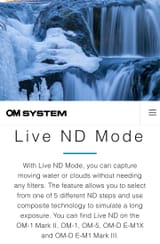>>4446468
No, it isn't.
You are wrong and don't even understand why you're wrong.
Photo stacking is essentially "purist" grade. There's really nothing "computational" about it.
Imagine for a moment the top left most photosite of your sensor gives you the following values across 10 exposures.
25419
25167
24957
25739
25601
25530
25104
24985
26010
25881
It's not wrong to average these, along with every other photosite. Sure, computing the new value is required and is technically computational but you're actually getting closer to the TRUTH of the real-world scene and not faking anything. You're just getting a cleaner sample.
When people talk about computational garbage they mean things like "enhancing" faces with AI or filters or applying tone curves and local contrast and other garbage like that.
In a perfect world our sensors would have larger wells and simply allow shooting at ISO1 if we wanted, making this workaround method unnecessary, but ultimately the result would basically be identical.
The only situation where a 600s (10m) exposure with liveND would be any less "authentic" than an actual 600s (10m) exposure with a physical ND is if the sensor readout and card dumping times are so damn slow you effectively "lose sight" of things long enough to cause problems, but that isn't really common. Without significant gaps between exposures you can do multi-sampling just fine without it adding anything artificial to the scene.


